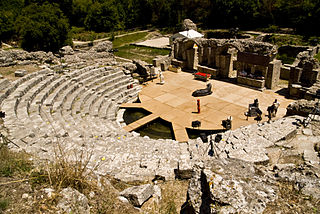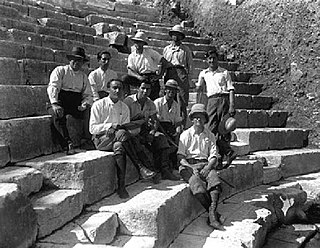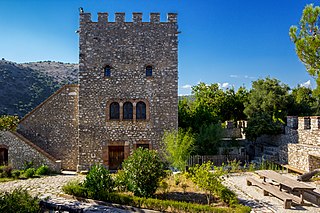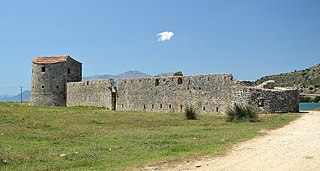Self-guided Sightseeing Tour #1 in Ksamil, Albania
Legend
Tour Facts
1.1 km
41 m
Experience Ksamil in Albania in a whole new way with our free self-guided sightseeing tour. This site not only offers you practical information and insider tips, but also a rich variety of activities and sights you shouldn't miss. Whether you love art and culture, want to explore historical sites or simply want to experience the vibrant atmosphere of a lively city - you'll find everything you need for your personal adventure here.
Sight 1: Baptistery of Butrint
The Baptistery of Butrint, is an archeological site in Vlorë County, Albania and part of the Butrint National Park. Located in the archaeological site of Butrint, it is a late antique structure known for its well-preserved mosaic pavement. The centrally planned, circular baptistery is also notable as an ancient Roman monument adapted to the needs of Christianity.
Sight 2: Theatre
Butrint theater The theater cave lies inside a square structure, supported by corner reinforced side walls, imitating a well -known theater model in Dodona. The stairs have five compartments, built of large stones, with a length of about 1 meter. The division of ulavas was made by status, where in the first rows the most authoritarian people were sitting near the scene, with special space to relax. , his discovery lasted for about 4 years from Ugolini on the south side of the city's acropolis. It consists of living places, scenes and orchestras. There were 19 lines with stone blocks that served as a seat and 3-4 rows on top. The first 13 stairs are fully preserved. To pass between the lines served 6 pairs of stone stairs were initially decorated with two lion paws. The backdrop in front of the scene consists of a high wall with three marble ornamental arches, where the patterns of the time were placed. The scene square was laid with stone slabs in the Ottoman period. In front of the stairs is located the orchestra site has the shape of an arch is paved with quadratic limestone. The scene is raised higher than the orchestra Square. The scene consists of two environments: Paraskane and backstage. At the background are the narrow corridors that served to enter and move the actors here are some inscriptions on the release of slaves. It is said that many slaves have been released some of whom were women.
Sight 3: Archaeological Museum of Butrint
The Archaeological Museum of Butrint was opened in 1938. It was reopened during the 1950s-1960s in the premises of the Venetian Acropolis Castle within the acropolis of the ancient city. It containes the Graeco-Roman archaeological finds from the Italian Archaeological Mission of the period between the two World Wars, led by Luigi Maria Ugolini.
Sight 4: Venetian Acropolis Castle
The Venetian Acropolis Castle is a castle on the Butrint Peninsula in southern Albania. The castle is located by the Channel of Vivari within the Butrint National Park and close to the neighbouring Venetian Triangular Castle.
Sight 5: Venetian Triangular Castle
The Venetian Triangular Castle is a castle near Butrint. The castle is located by the Channel of Vivari nearby Butrint National Park.
Share
How likely are you to recommend us?
Disclaimer Please be aware of your surroundings and do not enter private property. We are not liable for any damages that occur during the tours.
GPX-Download For navigation apps and GPS devices you can download the tour as a GPX file.



